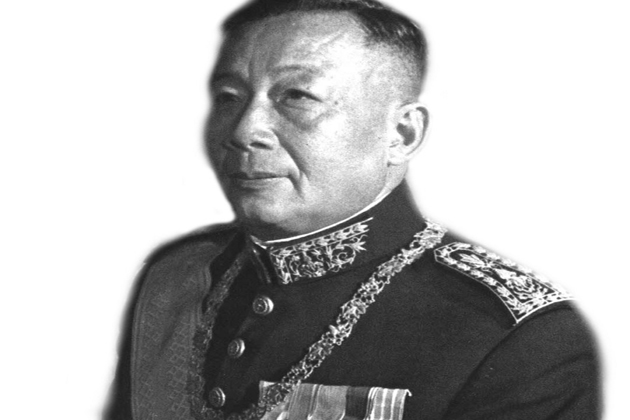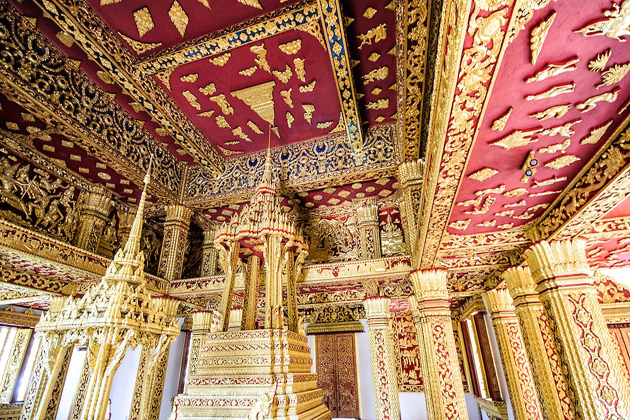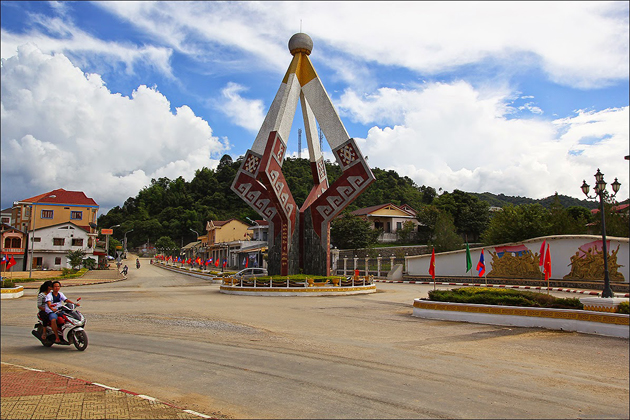During the Laos tours, visiting the ancient capital of Luang Prabang, visitors will be visited the remnants of the monarchy over six centuries. For anyone who likes to find about the history of Laos as well as the truth about the death of the last king of Laos.
A Brief Infomation of the Last King of Laos
That can be the throne, the library, the bedroom of the last king “Sisavang Vatthana”, or still called in French, the language commonly used in the Royal Savang Vatthana. No one knows the tragedy of the Royal Family of Laos. For decades, the Lao government has failed to provide a satisfactory answer to the disappearance of the last king Savang Vatthana. Mr.Kesan Fonwihan, the leader of the Lao Communist Party, visited France in 1989 and asserted: "I want to tell you that Sisawan Vathana is dead naturally. This happens to everyone.”
Before the Second World War Savang Vatthana was the only Prince to study law in Paris with two Souvanna Phouma Souphanouvong, who also studied in France. They settled in the apartment on the Raspail Boulevard of General Coquelet. Souphanouvong then married a Vietnamese woman, becoming the first President of the Lao People's Democratic Republic (1976-1985).
The Last Days of the King
In fact, the head of the Lao apparatus is the president of the Lao People's Revolutionary Party, Kaysone Phomvihane. The new regime immediately faced a major difficulty. The aid-based economy is not being restructured, while Western money disappears after the nationalization of some manufacturing facilities. Political opponents, even those who contributed so much to the Pathet Lao, were sent to reform, and the city residents pushed for the establishment of a 'new economy'.
The vote had no increased confidence, from 1976 to 1977, followed by 1978. For many years, the fate of King Savang Vatthana, the successor of SayVongsavang, and Queen Khamphoui was the subject of controversial rumors. A Lao official said that the Royal family lived in a small villa, surrounded by pretty flowers. In 1987, new ruthlessness was revealed. The king was detained and forced to work in the field eight hours a day, six days a week at the age of 70. All three died a few years later. The witnesses escaped from the place where they were told the tragedy of the respected dynastic Requiem.
On March 11, 1977, the royal family Savang Vatthana, the successor of SayVongsavang, and Queen Khamphoui were escorted out of the Royal Palace in Luang Prabang to escort the notorious prison in Viengsay. They were then taken to Hua Phang, the historical fortification of the Pathet Lao. A completely isolated area, surrounded by forests.
The Laotian Royal Family Entered the Re-Education Camp
They were detained in the area for those who needed to be segregated. The camp was built in 1974, separated by bamboo sticks, and sharp barbed wire, also made by prisoners of the new regime. The camp is located just north of Sam Neua, 72 km from the Vietnam-Laos border. In September 1977, the last representative of the Lao Dynasty was heard of the 17th decree of the camp: All captured prisoners were considered enemies of the Lao people, not be citizens of Laos, and detention without trial.
Upon entering the camp, King Savang Vatthana was 69 years old. He did not have any privileges other than the prisoners. He and Crown Prince SayVongsavang and three people together with the prison to work in the field, milling rice. Every day, the king received from his manager two bowls of cooked rice and mouse dung. Unwilling to work, lack of food, high age, the king quickly collapsed, bad health to no longer work.
The regulation number 9 of the camp stated that those who do not work will be cut off their diets. The king was paroled in prison, starved. Prince SayVongsavang shared his rice with his father and persuaded him to eat. On May 2, 1978, the Prince of Laos died because rice and salt were not enough to feed both.
On May 13, 1978, he laid on his bed and said the last words, "I offer my soul, my blood and my body to the fertile land of Laos, and to all the peoples of Laos. ''.He breathed heavily and went away. He died 11 days after his death. Hours after his death, three cooks dug a pit buried without ceremony, gloomy, heartbreaking as burqa Prince Say Vongsavang not long before. They are not crying out loud.
The king's portion is at the foot of the Kok Leuang, approximately 100 meters north of Detention Center No. 1, at the edge of the Houy Nor Kok stream on the local map. The head buried in the north. His son turned his head to the south, buried not far from the commanding general of the Royal Lao Army, General BounPone Makthepharak. No tombstones are allowed in front of their final resting place. Empress KhamPhoui was also incarcerated and could not attend to her husband and son. The words were shrouded in remembrance, they only threw the corpses of the last royal representatives Laos down the pebbles peach hurry.
Two years later, she still did not know that her husband and son had left. The witness saw her last no longer recognize the Queen of Laos. White hair and sad eyes, she chewed betel all day to fall into oblivion. Those eyes finally closed on December 12, 1981. Her grave is about one kilometer from where her husband was buried and also without beer.




